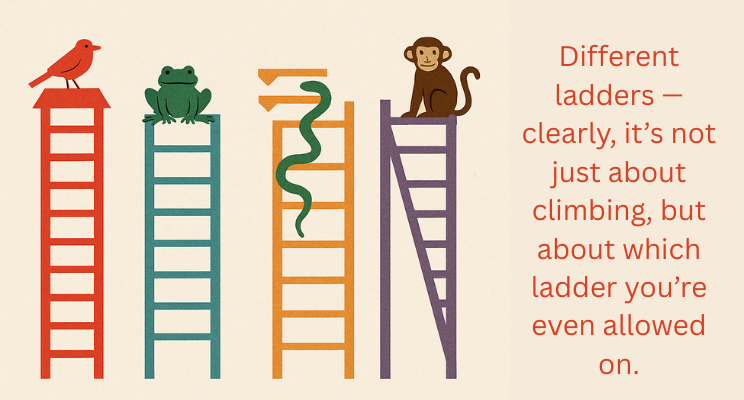A Straight Talk for Teachers and Higher-Ed Faculty (With a Few Laughs)
If you’ve ever wondered why the most sincere teacher or the sharpest assistant professor isn’t the one getting the corner room or the “Professor” title, you’re asking the right question. Career ladders in education sometimes feel like they were designed during a power cut — half-finished, slightly shaky, and definitely confusing.
Let’s break it down without jargon.
Hard Work Isn’t the Only Engine
Research shows nearly 70% of high performers genuinely believe hard work alone will push them upward. Yet fewer than 40% actually get promoted for that work. In simple terms: effort is the engine, but visibility is the steering wheel. Without both, you’re doing a long drive in neutral.
Some People Don’t Fall Behind — They Exit the Race
More than 50% of professionals say they would trade a fancy title for meaningful work. Many teachers and faculty quietly take this path. They choose passion over politics, classrooms over committees, students over status. They’re not stuck; they’re choosing a different lane. (And yes, it’s perfectly normal to pick “impact” over “I have a bigger office now.”)
The Silent Performer Problem
Another group believes good work will magically broadcast itself, like a radio station with perfect signal. Reality check: most institutions barely have functioning Wi-Fi, let alone telepathy. Studies show employees with a mentor or sponsor are 20–25% more likely to advance. Translation: being seen matters. Being supported matters even more.
The Ladder Itself Is… Questionable
Here’s where education gets interesting — and slightly ironic.
- In Indian universities, over half the faculty are women, but only around 10–13% of Vice-Chancellors are women.
- In schools, women dominate principal roles, yet thousands of talented teachers never move up.
Same country. Same talent. Different ladders. It’s like giving one group an escalator and the other a rope.
And while we’re at it, why do so many Assistant Professors never become Professors? It’s not always talent; often it’s limited openings, unclear pathways, or a promotion structure tighter than a school budget meeting.
Maybe the Problem Isn’t You — It’s the Ladder
Some ladders reward people who coordinate meetings, forward emails, and look busy. Others reward real value. Guess which ladder fills faster?
Many institutions accidentally reward “visibility theatre” over meaningful contributions. Teachers carrying entire schools on their shoulders stay unseen, while someone scheduling twelve meetings a day becomes the star. (If scheduling meetings burned calories, half our staff rooms would be Olympic-ready.)
Time to Redefine Rising
Climbing should not mean twisting yourself into administrative origami.
Let rising mean:
- solving real problems
- supporting colleagues
- improving student outcomes
- creating value that lasts
When institutions reward these things, more women become VCs, more teachers become principals, and more brilliant academics reach professorship without needing to play politics.
One Last Pun (I Promise)
A strong ladder doesn’t just help you climb — it helps the whole institution stop wobbling.
If schools and universities build transparent, fair, and inclusive pathways, the right people finally rise. And maybe, just maybe, the middle rung will stop being the most crowded place in education.

